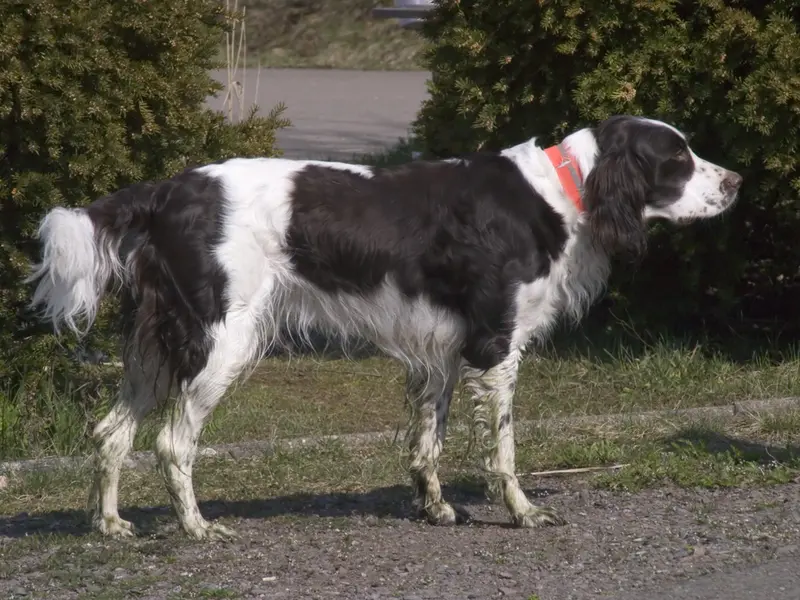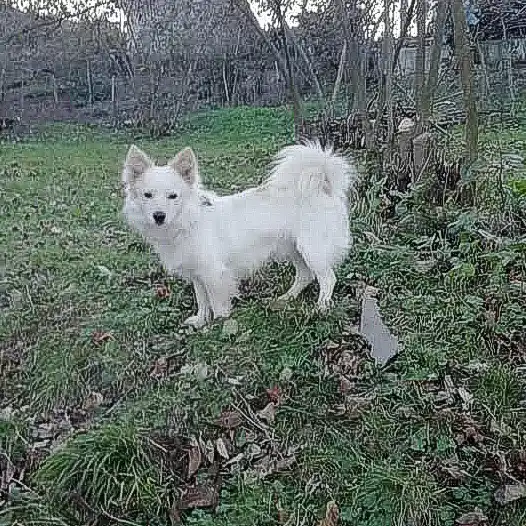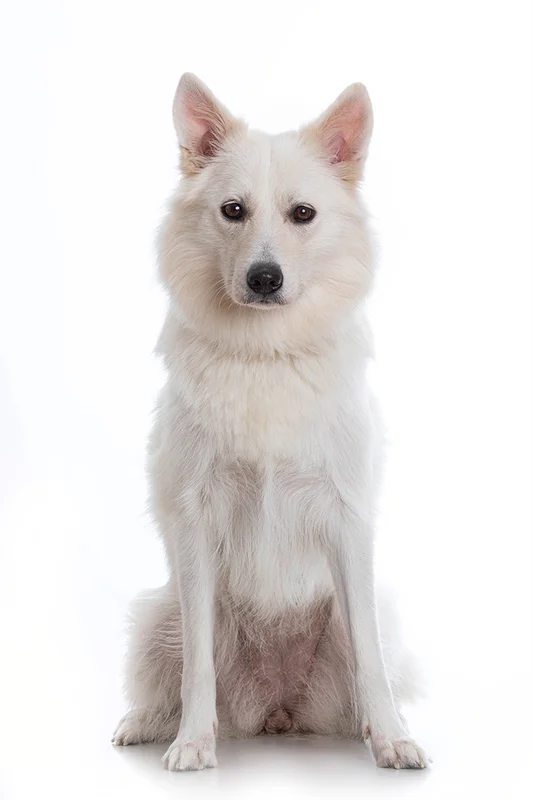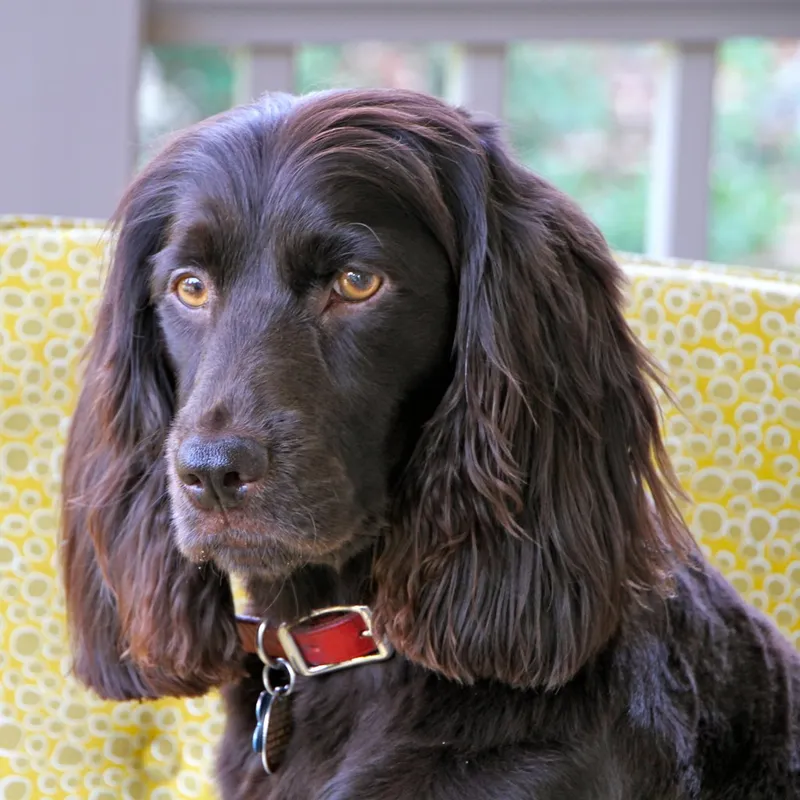Shiloh Shepherd
The Shiloh Shepherd is a large, intelligent breed known for its gentle temperament and versatility. Developed in the U.S., they excel in therapy, obedience, and herding.
Overview
🐕Breed Overview
✨Key Traits
💡What Makes Shiloh Shepherd Special
The Shiloh Shepherd stands out for its impressive size and regal bearing, showcasing a balance of strength and elegance. Their intelligence and trainability make them suitable for various roles, from working dogs to beloved companions.
Shilohs are known for their gentle temperament, making them great with children and other pets. Their versatility allows them to excel in obedience, agility, and herding activities, while their loyalty and affectionate nature ensure they form strong bonds with their families.
These traits make them a unique and cherished breed among dog enthusiasts.
The Shiloh Shepherd is a remarkable breed that combines intelligence, strength, and a gentle temperament. Developed in the United States in the 1970s by Tina M. Barber, this breed was created to resemble the larger, more stable German Shepherds of yesteryear.
With a regal bearing and a well-balanced physique, Shiloh Shepherds stand out for their impressive size and graceful movement. Males typically reach heights of 30 inches or more, while females stand at least 28 inches tall, making them larger than their German Shepherd counterparts. Shiloh Shepherds are known for their versatility and adaptability, excelling in various roles such as therapy dogs, search and rescue, and assistance work.
Their gentle nature and trainable drive make them excellent companions for families, especially those with children. With proper socialization, they can adapt to different environments and are generally stable and friendly. Their coats come in a variety of colors, including black and tan, golden, silver, and sable, and they can have either a smooth or plush coat.
Grooming requirements vary depending on the coat type, with the plush coat requiring more maintenance due to its length and density. In terms of health, Shiloh Shepherds have an average lifespan of 9 to 14 years, similar to German Shepherds. They may be prone to certain health issues, including hip dysplasia and bloat, but responsible breeding practices have significantly reduced these risks.
Overall, the Shiloh Shepherd is a loyal, intelligent, and loving breed that thrives on companionship and activity. Their unique blend of strength and gentleness makes them a wonderful addition to any family, and their versatility ensures they can excel in various roles, from working dogs to beloved pets.
🎉Fun Facts
Shiloh Shepherds were developed to preserve the traits of the German Shepherds of the past.
Shilohs have been recognized for their work in therapy and assistance roles, showcasing their gentle nature.
The breed is still under development, making them a unique and rare find among dog breeds.
They excel in various dog sports, including agility and obedience competitions.
Breed Characteristics
Family & Friends
Good Behavior
Get Up & Go
Household Harmony
Temperament & Personality
✨Key Traits
🐕Core Temperament
The Shiloh Shepherd has a calm and confident demeanor, making them excellent family pets. They are friendly and outgoing, often forming strong bonds with their human companions.
Their protective instincts make them vigilant watchdogs, while their gentle nature allows them to interact well with children and other animals. Shilohs are intelligent and trainable, thriving on mental stimulation and physical activity.
They require consistent training and socialization to ensure they develop into well-rounded adults.
💫Personality Profile
Shiloh Shepherds are known for their loyal and outgoing personalities. They are gentle and loving, making them excellent companions for families, especially those with children.
With proper socialization, they adapt easily to various environments and are generally stable and friendly. They are intelligent and eager to please, which makes training a rewarding experience.
Their playful nature and strong bond with their owners contribute to their reputation as excellent family pets.
🔊Vocal Tendencies
Shiloh Shepherds are generally moderate barkers. They may bark to alert their owners of strangers or unusual sounds but are not known to be excessive barkers.
Their vocalizations can include barking, whining, and howling, particularly when they are excited or seeking attention. With proper training and socialization, their barking tendencies can be managed effectively, ensuring they remain well-mannered companions.
Affection & Social Traits
Energy & Activity
Communication Style
Care Requirements
🏃♂️Exercise Requirements
Daily Exercise
Shiloh Shepherds are an active breed that requires regular exercise to maintain their physical and mental well-being. Ideally, they should engage in at least 60 to 90 minutes of exercise daily, which can be broken down into multiple sessions throughout the day. Activities such as brisk walks, jogging, playing fetch, and participating in dog sports like agility and obedience training are excellent for this breed.
Puppies should have shorter, more frequent play sessions to avoid overexertion, while adult dogs benefit from more intense activities. Senior Shilohs may require less vigorous exercise but still need daily walks to keep them healthy and happy. Regular exercise helps prevent obesity, reduces behavioral issues, and promotes cardiovascular health.
Insufficient exercise can lead to weight gain, anxiety, and destructive behaviors, making it crucial for owners to provide ample physical activity.
Preferred Activities
🏠Living & Adaptability
Space Requirements
Shiloh Shepherds thrive in homes with ample space, ideally a large yard where they can run and play freely. They can adapt to apartment living if given sufficient daily exercise and mental stimulation, but they may become restless in confined spaces.
Owners in smaller living environments should ensure they provide regular outdoor activities and engage in interactive play to meet their exercise needs. The breed's size and energy level necessitate a safe, secure area for exercise, as they may exhibit destructive behaviors if bored or confined for too long.
Climate Preference
🍲Feeding Guide
Schedule
Food Types
Portion Size
Special Nutritional Needs
Shiloh Shepherds may require a diet rich in protein and healthy fats to support their active lifestyle. It's essential to choose high-quality dog food that meets their nutritional needs. Some Shilohs may be prone to food sensitivities, so monitoring their diet and consulting with a veterinarian for specific dietary recommendations is advisable.
✨Grooming Requirements
Grooming Overview
Shiloh Shepherds have varying grooming needs depending on their coat type. The smooth coat requires less maintenance, needing brushing once a week to remove loose hair and debris.
The plush coat, however, requires more frequent grooming, ideally 2-3 times a week, to prevent matting and tangles. Regular brushing helps manage shedding, which can be moderate to heavy, especially during seasonal changes.
Bathing should be done as needed, typically every few months, or when they become particularly dirty. Nail trimming should be done every 2-4 weeks, and regular dental care is essential for overall health.
Care Schedule
Brush plush coat 2-3 times a week; smooth coat once a week; bathe as needed, typically every 2-3 months; trim nails every 2-4 weeks.
Health Profile
⚕️Health Care
Regular health care is vital for the Shiloh Shepherd's longevity. Routine veterinary check-ups, vaccinations, and preventive treatments help detect health issues early.
Maintaining a healthy weight through proper diet and exercise is crucial, as obesity can lead to various health problems. Regular dental care, including brushing and professional cleanings, is also important for preventing dental disease and promoting overall health.
Health Issues Overview
⏳Average Lifespan
Genetic Factors
Genetics play a significant role in the Shiloh Shepherd's lifespan, with hereditary health issues such as hip dysplasia and exocrine pancreatic insufficiency being of concern. Responsible breeding practices, including health testing and genetic screening, are essential to reduce the incidence of these conditions. Potential owners should seek reputable breeders who prioritize genetic diversity and health in their breeding programs to ensure a healthy dog.
Living Conditions
The Shiloh Shepherd's lifespan can be influenced by various environmental factors, including housing conditions, climate, and social interactions. A stable, loving home with ample space for exercise contributes positively to their longevity.
Regular veterinary care, a balanced diet, and mental stimulation are crucial for maintaining their health. Exposure to different environments and socialization with people and other animals can enhance their adaptability and overall well-being, potentially leading to a longer, healthier life.
🏥Common Health Issues
Hip Dysplasia
Warning Signs
🔬Diagnosis
X-ray examination by a veterinarian.
💊Treatment
Surgical options or medication may be necessary in severe cases.
📝Management Tips
Maintain a healthy weight, provide joint supplements, and avoid excessive exercise during growth stages.
Bloat/Torsion
Warning Signs
🔬Diagnosis
Physical examination and X-rays by a veterinarian.
💊Treatment
Emergency surgery may be required.
📝Management Tips
Feed smaller, more frequent meals and avoid vigorous exercise after eating.
Exocrine Pancreatic Insufficiency
Warning Signs
🔬Diagnosis
Blood tests and fecal tests by a veterinarian.
💊Treatment
Lifelong enzyme supplementation.
📝Management Tips
Provide digestive enzyme supplements and a balanced diet.
Panosteitis
Warning Signs
🔬Diagnosis
Veterinary examination and X-rays.
💊Treatment
Usually resolves with time; pain management may be necessary.
📝Management Tips
Limit exercise during growth spurts and provide a balanced diet.
🛡️Preventive Care
🔬Hip Evaluation
Hip Evaluation to assess for hip dysplasia and ensure proper joint health.
📅 Annually, especially during growth stages and before breeding.
🔬Thyroid Function Test
Thyroid testing to check for hypothyroidism, which can affect energy levels and overall health.
📅 Every 1-2 years, or if symptoms arise.
🔬Pancreatic Function Test
Pancreatic function test to assess for exocrine pancreatic insufficiency, which can lead to digestive issues.
📅 As needed, especially if gastrointestinal symptoms are present.
Training
🧠Intelligence & Trainability
💪Work Drive
Shiloh Shepherds possess a strong work drive and thrive when given tasks to complete. Their intelligence and eagerness to please make them highly trainable, and they excel in various activities such as agility, obedience, and herding.
Providing them with mental stimulation through training exercises, puzzle toys, and interactive games is essential for their well-being. Without sufficient engagement, they may become bored and exhibit undesirable behaviors.
Owners should aim to incorporate a mix of physical and mental challenges into their daily routines.
⚠️Training Considerations
Shiloh Shepherds are generally eager to please, but they can exhibit stubbornness if not properly trained. Common challenges include their strong prey drive, which may lead them to chase smaller animals, and their protective instincts, which can result in wariness around strangers.
To address these challenges, early socialization and consistent training are essential. Positive reinforcement methods work best, as they respond well to rewards and praise.
Engaging them in obedience training and providing mental stimulation through puzzle toys can help mitigate behavioral issues and keep them focused.
📝Training Tips
Training a Shiloh Shepherd requires patience and consistency. Start with basic obedience commands and gradually introduce more complex tasks.
Use positive reinforcement techniques, such as treats and praise, to encourage good behavior. Socialization is crucial; expose them to various environments, people, and animals from a young age to foster a well-rounded temperament.
Incorporate fun activities like agility training or interactive games to keep them engaged. Regular training sessions should be short and enjoyable to maintain their interest and enthusiasm.
History & Heritage
📜Origin Story
The Shiloh Shepherd's story begins in the 1970s when Tina M. Barber sought to recreate the ideal German Shepherd she remembered from her childhood in Germany.
She began her breeding program in New York, focusing on producing larger, more stable dogs with excellent temperaments. By 1990, Barber had established a distinct breed that she named the Shiloh Shepherd, after her kennel.
The breed was recognized by the Federation of International Canines (FIC) as a separate breed, and the Shiloh Shepherd Dog Club of America was formed to ensure the breed's future. Since then, the Shiloh Shepherd has gained popularity for its intelligence, versatility, and gentle nature, making it a sought-after companion and working dog.
⏳Development History
The Shiloh Shepherd was developed in the 1970s by Tina M. Barber, who aimed to create a breed that resembled the German Shepherds of her childhood in Germany.
By selectively breeding larger German Shepherds with a focus on intelligence, temperament, and physical soundness, she established the foundation for the Shiloh Shepherd. In 1990, Barber separated her breeding stock from the American Kennel Club (AKC) and sought recognition for her new breed.
The Shiloh Shepherd Dog Club of America was formed to promote and protect the breed's welfare. Over the years, the breed has continued to evolve, with a focus on maintaining its unique characteristics and improving health through responsible breeding practices.
🛡️Purpose & Historical Role
Originally bred as a companion and working dog, the Shiloh Shepherd has evolved to excel in various roles, including therapy, search and rescue, and assistance work. Their intelligence and trainability make them suitable for obedience and agility competitions, while their gentle temperament allows them to work well with children and other animals.
The breed's herding instincts also make them effective livestock guardians. As a relatively new breed, the Shiloh Shepherd continues to develop and adapt to the needs of modern dog owners.
🏺Cultural Significance
The Shiloh Shepherd is a relatively new breed that was developed in the United States, reflecting a desire to create a larger, more stable version of the German Shepherd. This breed has gained recognition in various rare breed organizations and has become popular among dog enthusiasts for its intelligence, versatility, and gentle temperament.
Shiloh Shepherds are often involved in therapy work, search and rescue, and service assistance, showcasing their adaptability and strong bond with humans. Their unique characteristics and capabilities have made them a beloved choice for families and individuals seeking a loyal companion.
Conservation Status
This breed is less common but has stable populations in certain regions.









